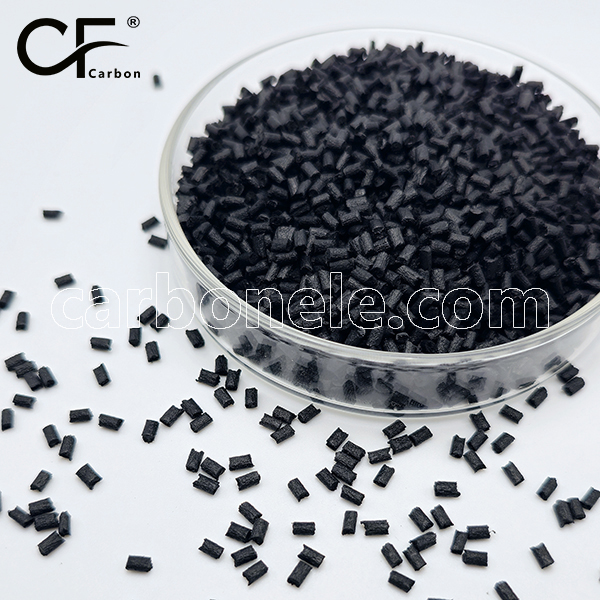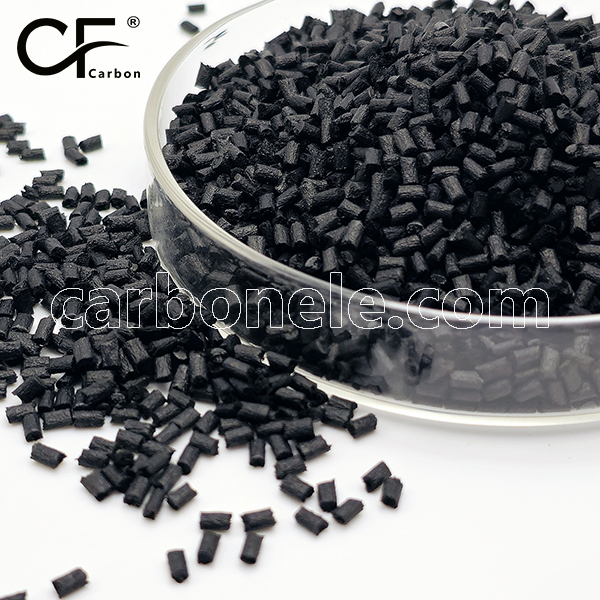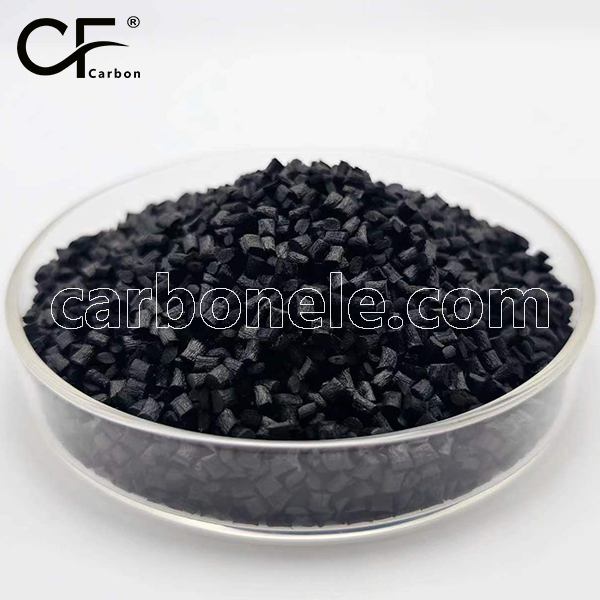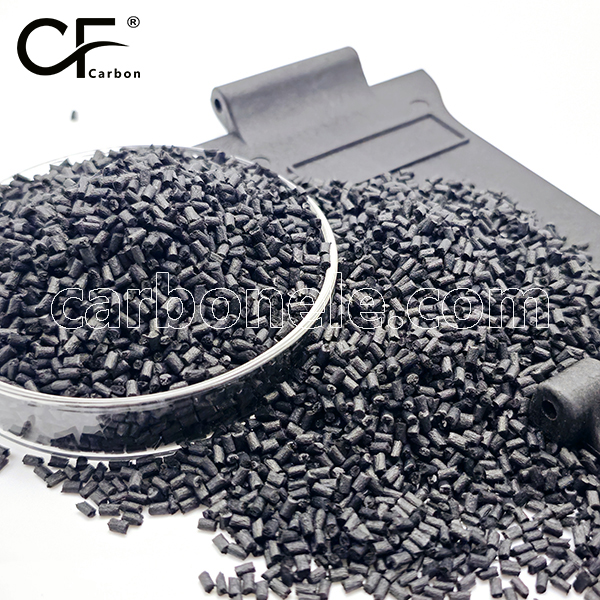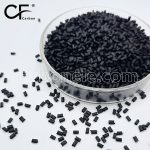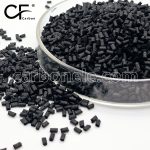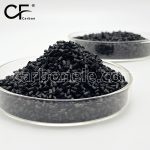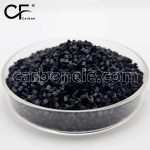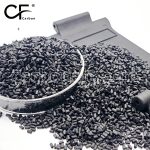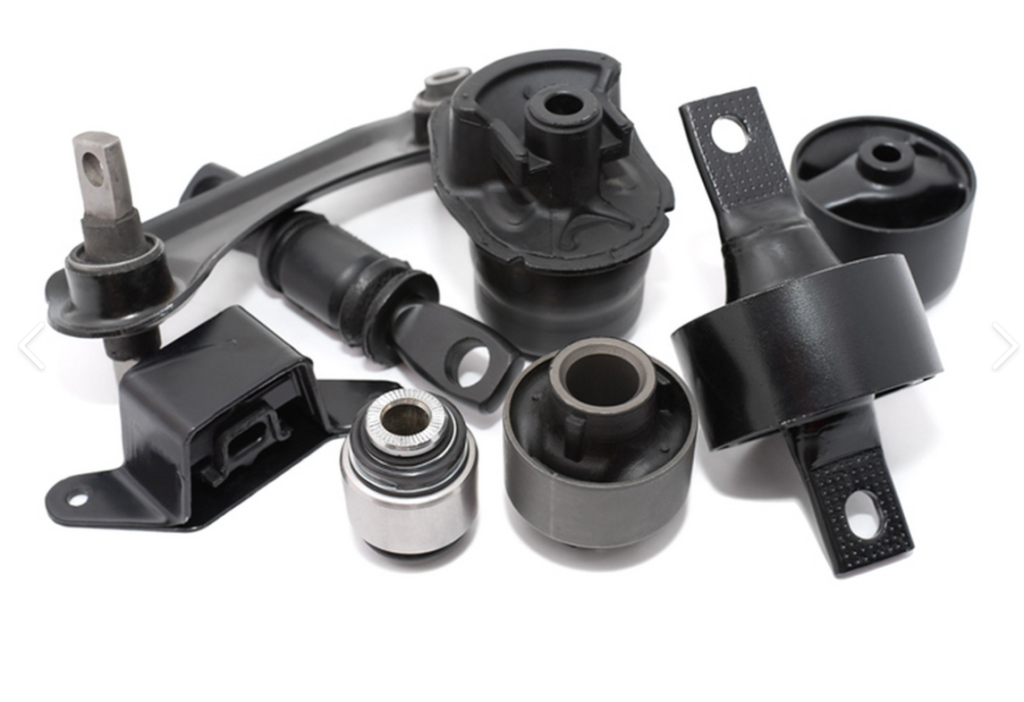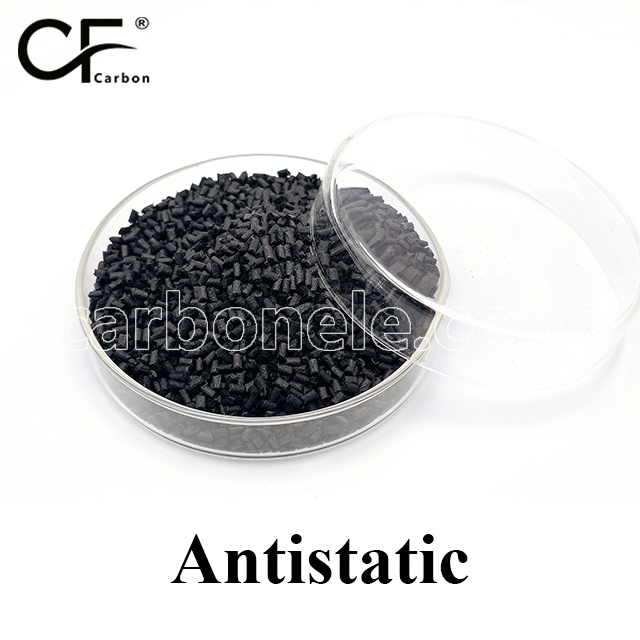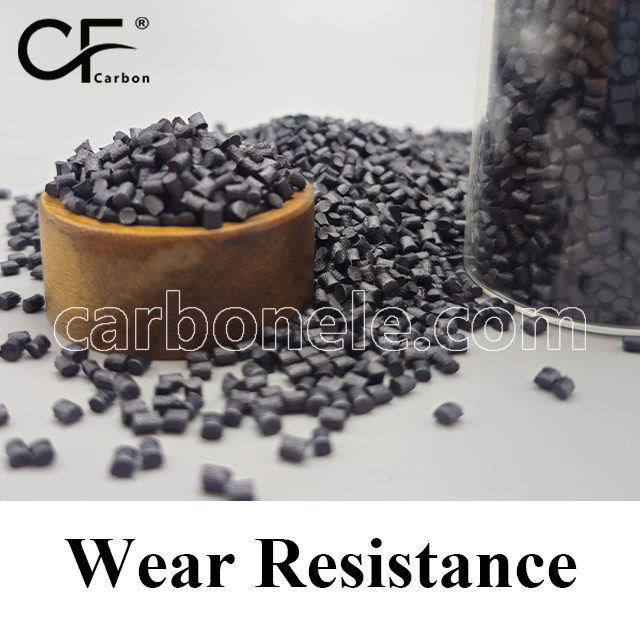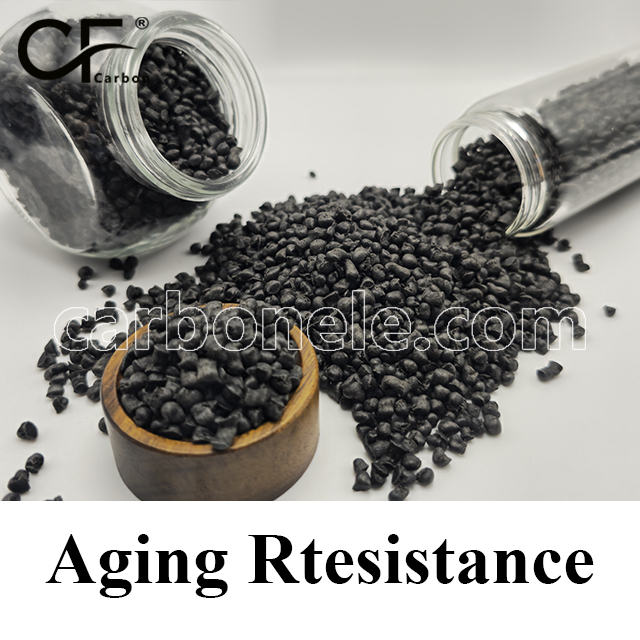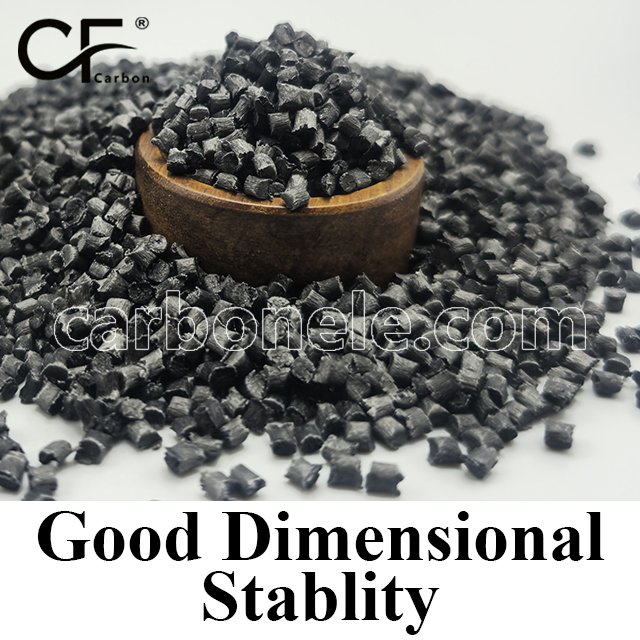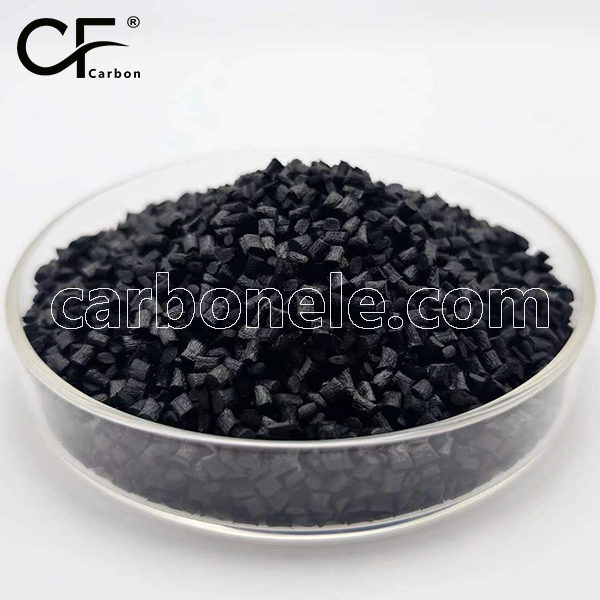The friction coefficient of PA66-CF is significantly lower than that of unreinforced PA66, thanks to the presence of carbon fiber, which acts as a solid lubricant. While PA66 already offers decent wear resistance, the addition of carbon fiber greatly enhances its tribological performance by reducing surface friction and improving wear resistance under load and repeated motion. This makes PA66-CF especially suitable for applications involving sliding contact or dynamic mechanical stress.

Tired of Weak Plastics? Try PA66-CF10 for Stronger Parts
Discover how PA66-CF10 enhances part strength and stability. Ideal for demanding applications needing reinforced nylon with superior mechanical performance.
- Model number: PA66-CF-BCA1
- Matrix Resin: Polyamide66
- Reinforcing Filler: Carbon fiber(10%)
- Appearance: Granules
- Grade: Injection/extrusion grade
- Packaging: 25kgs/bag
Tired of Weak Plastics? Try PA66-CF10 for Stronger Parts
Tired of Weak Plastics? Try PA66-CF10 for Stronger Parts
Plastics breaking under stress are a common frustration in demanding engineering applications. Whether it’s a part warping under heat or cracking under load, the performance limitations of ordinary materials can lead to costly failures. PA66-CF10 offers a solution designed to overcome these common weaknesses. Engineered for strength and dimensional integrity, it brings a new level of reliability to your parts.
If you’re looking to build stronger, more durable plastic components, PA66-CF10 is the upgrade your products need.
What Is PA66-CF10
Reinforced for Reliability
PA66-CF10 is a carbon fiber reinforced polyamide material. It maintains the well-known chemical and thermal resistance of standard Nylon while significantly improving its structural behavior under load. By integrating carbon fiber into the polymer matrix, this material achieves a new level of stiffness and strength not found in unfilled Nylon grades.
Built for Demanding Environments
Unlike traditional materials that may deform or crack when subjected to mechanical stress or long-term heat exposure, PA66-CF10 maintains its shape and structure. This makes it a dependable choice for parts that require both durability and dimensional control.
Why Choose PA66-CF10
Resists Deformation and Fatigue
In dynamic or load-bearing applications, repeated stress can wear down conventional plastics. PA66-CF10 resists this fatigue, allowing it to be used in moving parts, supports, and critical enclosures without the risk of early failure.
Enhances Structural Integrity
One of the standout advantages of PA66-CF10 is its ability to maintain structural stability even under mechanical load. It delivers greater rigidity and reinforcement where it matters most, helping to reduce design failures and improve the lifespan of your product.
Application Highlight: Under-the-Hood Automotive Brackets
The Problem with Standard Plastics in Engine Bays
Under the hood of a vehicle, plastic components are exposed to constant temperature changes, vibration, and mechanical stress. A common challenge faced by manufacturers is cracking or bending of brackets that support wiring, tubing, or secondary systems.
When these parts fail, it can lead to more serious issues such as loose connections, damaged components, or even safety hazards. Using a standard Nylon material in these areas often proves insufficient in maintaining long-term durability.
How PA66-CF10 Provides the Solution
Replacing standard Nylon with PA66-CF10 in engine bay brackets greatly enhances performance. The added strength of carbon fiber helps the bracket resist warping from heat and eliminates flexing under the constant pressure of engine movement and vibration.
This reinforcement also contributes to better dimensional consistency, which means mounting points stay aligned and secure. As a result, both assembly and long-term reliability are improved.
Processing Advantages of PA66-CF10
Easy Integration with Injection Molding
PA66-CF10 is fully compatible with standard injection molding processes. Manufacturers can use existing equipment to produce parts with this material, minimizing the cost and complexity of upgrading to a more advanced solution.
Consistent Surface Finish and Stability
Even with fiber reinforcement, PA66-CF10 offers excellent flow characteristics and surface appearance. This makes it suitable for both functional and semi-visible components where appearance and performance need to work together.
Key Design Considerations for PA66-CF10
Optimize Part Orientation
Because PA66-CF10 incorporates directional fibers, its mechanical behavior varies slightly depending on how the material flows during molding. For critical load areas, it’s important to orient the part to maximize reinforcement in the direction of stress.
Design for Structural Efficiency
To fully leverage the capabilities of PA66-CF10, your part design should include ribs, support walls, or rounded corners where possible. These features help distribute force and prevent localized stress concentration, allowing the material to perform at its best.
Industries That Benefit from PA66-CF10
Automotive Manufacturing
PA66-CF10 is ideal for automotive components that operate under high temperatures and vibration, such as clips, mounts, brackets, and supports within the engine compartment or chassis systems.
Electrical and Electronic Housings
In environments where stability and reliability are crucial, PA66-CF10 provides excellent dimensional control. It helps prevent housing deformation in cable guides, connector bases, and component enclosures.
Industrial Equipment and Tools
Power tools, machinery housings, and operational brackets made from PA66-CF10 benefit from greater resistance to cracking, impact, and operational wear, improving both performance and user safety.
Making the Switch to PA66-CF10
If you’ve experienced challenges with brittle plastics, unstable parts, or poor long-term reliability, it’s time to consider a better alternative. PA66-CF10 is engineered to solve these issues by delivering mechanical strength and resilience, all within a material that processes like traditional Nylon.
You don’t need to change your tooling. You don’t need to redesign your manufacturing line. All you need is to switch to a smarter material that’s been engineered to last longer and perform better in the most demanding conditions.
Conclusion
PA66-CF10 is more than just an upgraded plastic. It’s a structural solution that helps you avoid the headaches caused by weak or unstable materials. From automotive to industrial applications, this carbon fiber reinforced polyamide delivers the strength, toughness, and reliability that modern engineering demands.
If you are tired of parts cracking, warping, or falling short of expectations, it’s time to try PA66-CF10 and experience what stronger plastics can truly achieve.
If you want to get more information about PA66-CF10, you can visit our Youtube.
Strength between PA66 and PA66-CF
Compared to unreinforced PA66, PA66-CF (carbon fiber reinforced) offers significantly higher strength and stiffness. The addition of carbon fiber increases tensile and flexural strength, enhances dimensional stability, and reduces deformation under load. While standard PA66 provides good toughness and impact resistance, PA66-CF materials are better suited for structural and high-stress applications where superior mechanical performance is required.
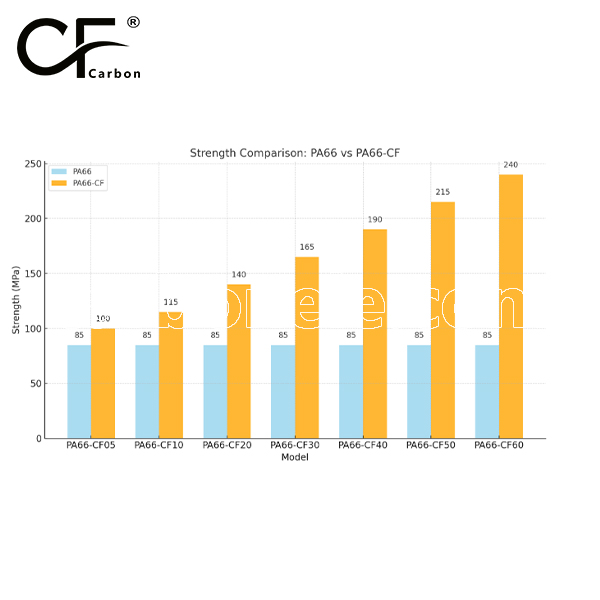
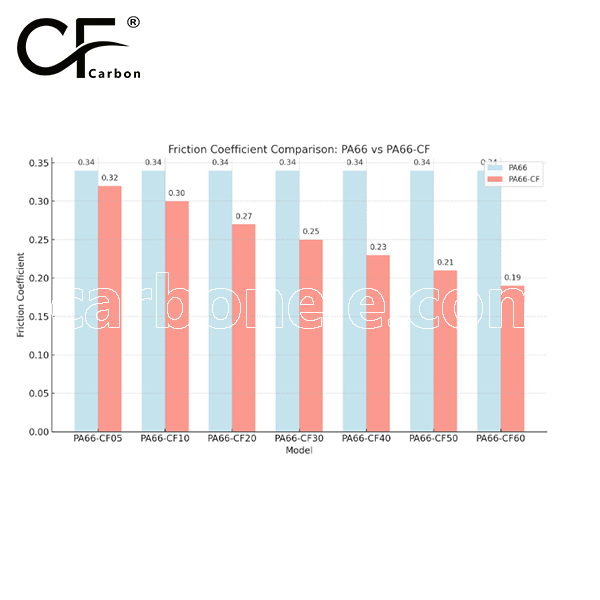

Frequently Asked Questions
Carbon (Xiamen) New Material Co., Ltd. aims to provide buyers with "one-stop" worry-free high-quality services. Here you can find all information about carbon fiber engineering plastics. If you still have questions, please send us an email for consultation!
-
How can I contact the manufacturer of a product that interests me?
When you find a product you are interested in, you can contact the manufacturer directly by sending an email and we will get back to you as soon as possible.
-
How do I find the products that interest me?
All you need to do is enter the keyword, product name in the search window and press the Enter key on your keyboard. Your search results page will then be displayed. You can also search within the product category pages on the home page. Each category is divided into subcategories, allowing you to refine your search and find products that interest you.
-
Where will I find a buying guide?
Please contact our after-sales service directly and we will provide you with a comprehensive operating guide.
-
What are CF Reinforced Thermoplastic Composites?
CF Reinforced Thermoplastic Composites are materials where carbon fibers are incorporated into a thermoplastic matrix. They combine the strength and stiffness of carbon fibers with the processability and recyclability of thermoplastics. For instance, they are used in automotive parts like bumper beams.
-
What are the benefits of CF Reinforced Thermoplastic Composites over traditional composites?
The key benefits include faster production cycles, easier recyclability, and better impact resistance. They also offer design flexibility. An example is in the manufacturing of consumer electronics casings where complex shapes can be achieved more easily.
-
How are CF Reinforced Thermoplastic Composites processed?
Common processing methods include injection molding, extrusion, and compression molding. Injection molding is widely used for mass production. For example, in the production of small components for the medical industry.
-
What industries use CF Reinforced Thermoplastic Composites?
They are utilized in aerospace, automotive, medical, and sports equipment industries. In aerospace, they can be found in interior components. In the medical field, they might be used in prosthetics.
-
How does the carbon fiber content affect the properties of the composites?
Higher carbon fiber content generally leads to increased strength and stiffness but may reduce ductility. A moderate content is often balanced for specific applications. For example, a higher content might be preferred in structural parts of a race car.
-
What are the challenges in using CF Reinforced Thermoplastic Composites?
Challenges include higher material costs, complex processing equipment requirements, and ensuring uniform fiber dispersion. Issues with adhesion between the fibers and the matrix can also arise. An example is in achieving consistent quality in large-scale production.







